NIL
New Michigan State AD J Batt’s priority list: build connections, funds
Tom Izzo feels ‘reinvigorated’ by Elite Eight run, MSU basketball MSU head coach Tom Izzo fell to 8-3 in Elite Eight games in a night that was all Auburn from the start in March Madness, March 30, 2025 in Atlanta. J Batt, Michigan State’s new athletic director, faces navigating the university’s political landscape and uniting […]
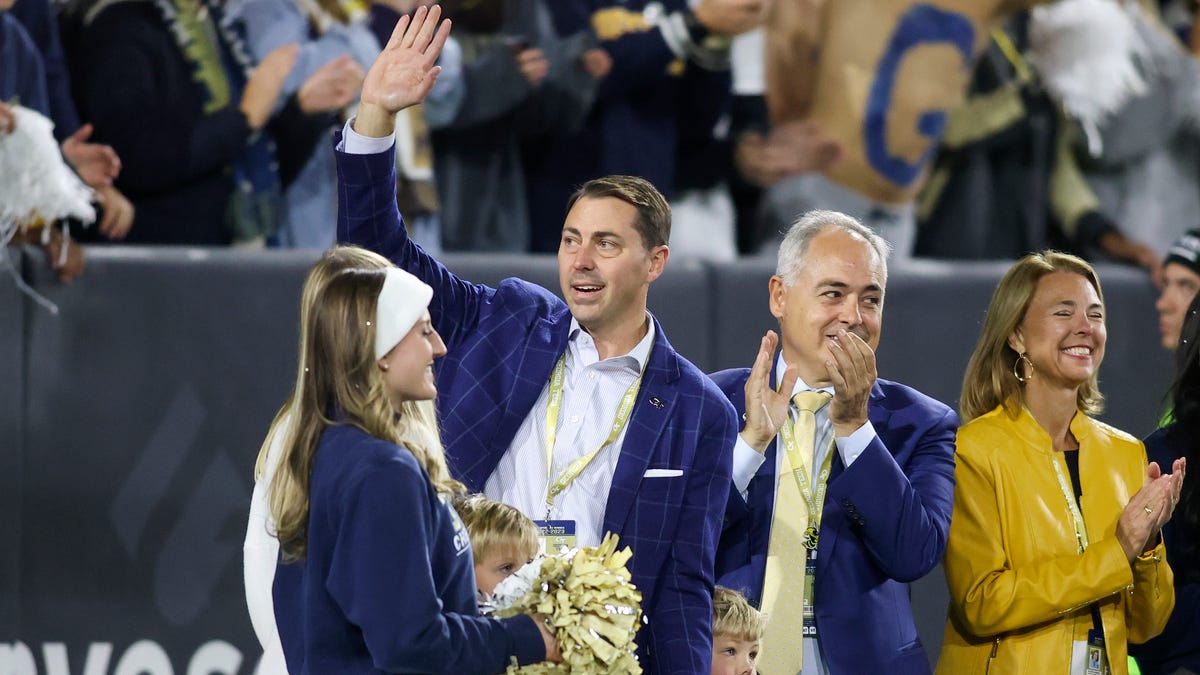

Tom Izzo feels ‘reinvigorated’ by Elite Eight run, MSU basketball
MSU head coach Tom Izzo fell to 8-3 in Elite Eight games in a night that was all Auburn from the start in March Madness, March 30, 2025 in Atlanta.
- J Batt, Michigan State’s new athletic director, faces navigating the university’s political landscape and uniting its power brokers.
- Batt’s financial priorities include boosting fundraising, enhancing the NIL structure, and exploring stadium naming rights.
- Stabilizing the athletic department’s budget, which has seen recent deficits, is another key task for the new AD.
To say Michigan State athletics is in a transitional and transformative period is an understatement.
It might be the most critical juncture for the school since the 1940s, when John Hannah, Ralph Young and Biggie Munn angled to get the Spartans into the Big Ten.
With college sports at a crossroad between their altruistic past and big-money present, MSU’s new athletic director J Batt arrives from Georgia Tech with a task list that will require a sharpened sense of prioritizing from a host of major needs to move the Spartans back to the forefront in the future.
Batt will be publicly introduced during a news conference at 3 p.m. Wednesday, June 4, inside Breslin Center. His contract is expected to be approved by MSU’s Board of Trustees at their next meeting June 13 in Traverse City.
But as Batt begins his job in East Lansing the week of June 16, there will be a litany of tasks on his agenda before the 2025-26 school year begins Aug. 25, with the football season kicking off four days later. Here is a list of five critical things on the to-do list for MSU’s 21st athletic director (and the school’s first outside hire to the position in 30 years).
1. Learn the political landscape
The prevailing belief is that Batt’s biggest tasks are increasing fundraising and enhancing MSU’s name, image and likeness structure — and they undoubtedly are high-ranking priorities — but none of that gets accomplished without the 43-year-old, who grew up in Virginia, first learning to navigate the tricky political ecosystem that has at times been the school’s biggest roadblock.
Save for a 10-year window of solace and success under Mark Hollis from 2007-17, the school’s internal powerbrokers and biggest benefactors externally often have displayed a bad habit of stunting progress with infighting and insolence. Hollis, along with then-president Lou Anna K. Simon, managed to get those forces pulling in one direction before everything was undone by the Larry Nassar scandal, leaving MSU in limbo and with flagging leadership since 2018. Before their abrupt resignations, Hollis and Simon two also gave the school and athletic program a seat at the head table of college sports with their ability to politic at the national and Big Ten levels while assuaging local political and campus leadership.
Both Hollis and Simon were MSU lifers who knew the history and potential landmines; Batt walks in as a complete outsider, as did current president Kevin Guskiewicz a little more than a year ago. They have known each other for about 25 years, Batt said Tuesday on the “MSU Today” podcast, from his time as a soccer player at North Carolina who participated in Guskiewicz’s concussion research projects before he ascended the ranks of academia.
Building relationships quickly in East Lansing is essential. They will rely on each other’s trust, though both new leaders must lean on Hall of Fame basketball coach Tom Izzo’s 40-plus years of experience at the university in navigating those sometimes-turbulent political waters. But pushing for change as an outsider also can create job-altering friction at MSU. Without the support of the right people, even with a visionary approach, the strongest-willed athletic director can wind up with his hands tied.
2. Touch hearts, open wallets
That also includes connecting with donors.
Finding a way to make both the external NIL collectives externally and internal Spartan Fund financially robust will be a major priority. Batt and Guskiezicz (who in March announced a $4 billion university-wide fundraising effort) are tasked with energizing the donor base that — as is the case at many other universities — is fatigued by the growing need for more money to keep major college athletics afloat.
One of Batt’s primary missions will be analyzing the future of Spartan Stadium and drumming up funds for upgrades or replacement. Departed athletic director Alan Haller this winter said MSU must explore selling naming rights to facilities, a move it previously balked at pursuing; Batt must also connect with the right corporate partners to give his new department as big a financial influx as possible.
3. Stabilize MSU’s spending
The athletic department has struggled to balance the books since before Hollis left and the coronavirus pandemic happened.
In 2023-24, MSU operated at a deficit for the fourth time in five years (under Haller and Bill Beekman before him), with nearly $180.5 million in total operating expenses to more than $163.7 million in total operating revenue, according annual documents filed Jan. 13 with the NCAA and obtained that month by the Free Press and the USA TODAY Network.
The more than $16.7 million shortall came a year after operating at an $11.2 million deficit in 2022-23. The athletic department had a $16.35 million surplus during the 2021-22 fiscal year, but its deficit was $17.8 million in 2019-20 and $15.4 million in 2020-21. The most recent fiscal year report puts the athletic department’s debt at nearly $91 million, up from $68.7 million the previous year.
While trying to get back in the black on the budget, Batt also will have to learn to fiscally manage more sports with the Spartans — 23, to Georgia Tech’s 17 — while being a “fiery athletic director that likes to win,” as he called himself Tuesday on the “MSU Today” podcast.
4. Restructure NIL
With change potentially coming nationally to college sports, getting MSU’s external donor groups on the same page will be essential. The biggest among them who have driven the direction — including Greg Williams of Acrisure, former Izzo player Mat Ishbia of United Wholesale Mortgage, Steve St. Andre of Shift Digital and those within the This is Sparta! collective — all possess financial clout individually. Reaching a higher plateau collectively will be Batt’s mission, using the current benefactors as a starting point to entice more to join, then uniting them all under a new umbrella to prepare for the next pivot when the House settlement kicks in and schools will essentially become distributors of funding.
Izzo understands the need for financing in the new world he’s adapting to, despite winning a Big Ten title while sticking to his principles. And in major college football, the market to pay the NFL-caliber players now required to compete for FBS championships is exploding. That’s just the two primary sports and not taking into account the money needed to pay players in non-revenue sports that Haller left in good position competitively.
5. Focus on future
MSU’s biggest revenue generator remains its football program, and the stadium and on-field product both need refreshing. The excitement of the Mark Dantonio era showed the Spartans still can walk among the giants in the sport, as did the one magical year with running back Kenneth Walker III under coach Mel Tucker that was the outlier of the past decade.
Then comes hard conversations about potentially cutting more sports after Beekman eliminated the men’s and women’s swimming and diving programs in 2021. It is an uncomfortable topic, particularly for a former non-revenue athlete like Batt, who was a goalie on North Carolina’s 2001 national champion men’s soccer team and said he believes in being “in the opportunity business” for student-athletes despite the trend toward professionalism.
And that barely scratches the surface of what lies ahead as Batt leaves the declining Atlantic Coast Conference to try and bring MSU back among the elite of the power-wielding Big Ten.
Contact Chris Solari: csolari@freepress.com. Follow him @chrissolari.
Subscribe to the “Spartan Speak” podcast for new episodes on Apple Podcasts, Spotify or anywhere you listen to podcasts. And catch all of our podcasts and daily voice briefing at freep.com/podcasts.
Michigan State athletic directors
- Charles Bemies: 1899-1900.
- George Denham: 1901-02.
- Chester Brewer: 1903-10, 1917, 1919-21.
- John Macklin: 1911-15.
- George Gauthier: 1916, 1918.
- Albert Barron: 1922.
- Ralph Young: 1923-54.
- Clarence “Biggie” Munn: 1954-72.
- J. Burt Smith: 1972-75.
- John D. Shingleton: 1975-76.
- Joe Kearney: 1976-80.
- Doug Weaver: 1980-90.
- George Perles: 1990-92.
- Merrily Dean Baker: 1992-95.
- Merritt Norvell: 1995-99.
- Clarence Underwood: 1999-2002.
- Ron Mason: 2002-07.
- Mark Hollis: 2007-18.
- Bill Beekman: 2018-2021.
- Alan Haller: 2021-May 1, 2025.
- J Batt: Hired June 2, 2025 (begins week of June 16).
NIL
BYU Star AJ Dybantsa Lands 8-Figure Fanatics Deal
AJ Dybantsa, the potential No. 1 overall NBA draft pick in 2026, has become a multimillionaire before setting foot on a college basketball court, signing a multiyear deal with Fanatics Collectibles. The agreement with Fanatics’ memorabilia arm is worth eight figures, according to a source familiar with the deal, and is one of the sports […]
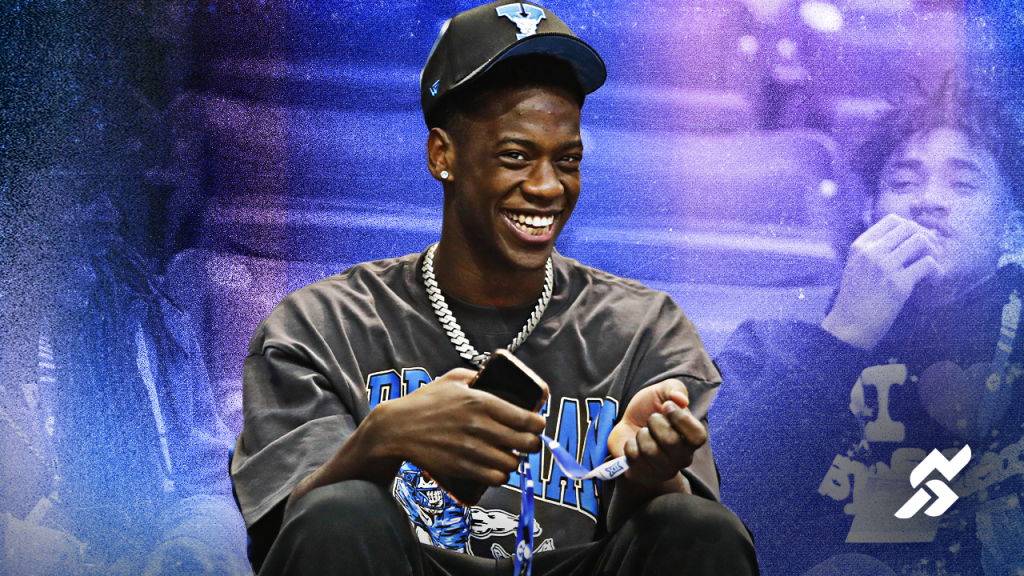
AJ Dybantsa, the potential No. 1 overall NBA draft pick in 2026, has become a multimillionaire before setting foot on a college basketball court, signing a multiyear deal with Fanatics Collectibles.
The agreement with Fanatics’ memorabilia arm is worth eight figures, according to a source familiar with the deal, and is one of the sports e-commerce giant’s most significant name, image and likeness contracts ever. The exclusive partnership, announced in an embargoed media release Wednesday, starts immediately and will be centered around Fanatics-owned Topps trading cards and other items.
The news comes just a few days after the Dybantsa led Team USA to a gold medal victory at the FIBA U19 World Cup. The 6-9 forward secured the World Cup MVP award and scored 100 points over seven games, showing why he’s one of the most heralded NBA prospects of the last decade. His professional trajectory has grabbed the attention of multiple brands and companies vying for his services.
As part of the Fanatics deal, the 18-year-old native of Brockton, Mass., will provide autographs, inscriptions and game-used jerseys and will be included in various brand marketing campaigns. He’s already slated to be featured in several products from the company’s Bowman University line, according to the company.
Fanatics has exclusive collectible partnerships with dozens of athletes and welcomed Dybantsa as its newest ambassador in a video clip released on Wednesday.
Fanatics, which bought trading card brand Topps in 2022, continues to spend big on relationships with future NBA lottery picks. The company has deals with the first two picks in last month’s NBA Draft, Cooper Flagg (Dallas Mavericks) and Dylan Harper (San Antonio Spurs). On the women’s side, it inked USC star JuJu Watkins to a multiyear pact—notable since rival Panini is the exclusive WNBA trading card licensee.
Dybantsa was already part of Fanatics’ McDonald’s All-American Game one-off deal. His endorsement portfolio includes Red Bull and Nike. The first BYU pledge to make the All-American game is considered one of college basketball’s top earners as he reportedly received more than $6 million to play for the Cougars.
Dybantsa is one of the last high school star athletes of the pre-House settlement era, which saw college standouts enter unregulated NIL deals. Now, all NIL deals over $600 must be reported by athletes and go through Deloitte’s national clearinghouse for review.
This latest deal with Fanatics will span beyond Dybantsa’s expected one season in Provo before he declares for the draft. The sides are likely hoping the relationship has a smoother transition from college to pro than Marvin Harrison Jr. had. The former Ohio State star and his father were sued by Fanatics in 2024 for breach of contract after the younger Harrison was drafted by the Arizona Cardinals. The convoluted dispute left Harrison as the only 2024 first-round pick not to have his jersey available for sale. The 10-month legal saga settled in March.
NIL
Syracuse Basketball may have figured out NIL
Share Tweet Share Share Email It’s no secret that Syracuse Athletics hasn’t run the tightest ship when it comes to NIL. Everything from losing players to broken donor relationships has come raining down on the Orange. But today, maybe, just maybe, Syracuse did something the right way. Tuesday evening, the Syracuse Men’s Basketball team held […]
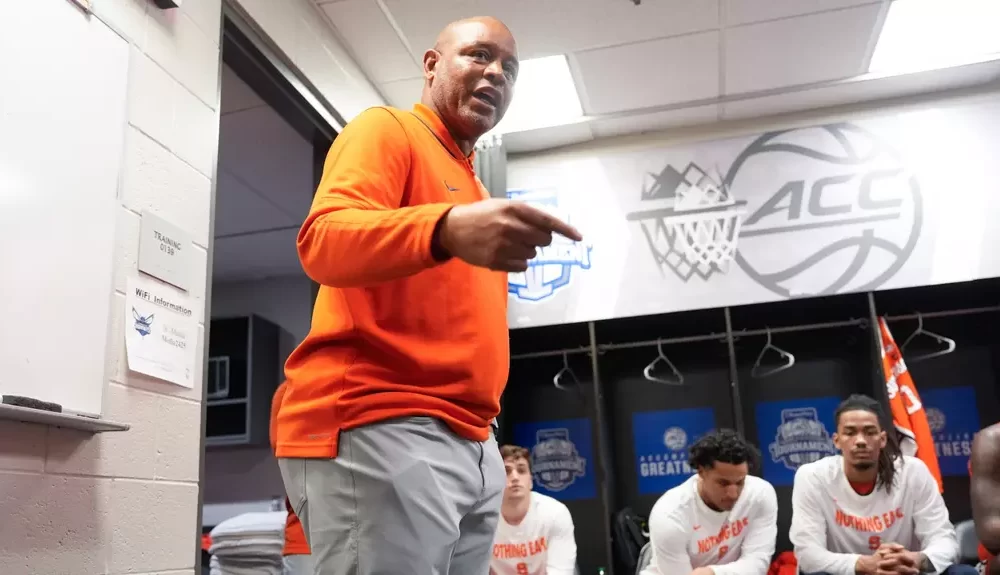
It’s no secret that Syracuse Athletics hasn’t run the tightest ship when it comes to NIL. Everything from losing players to broken donor relationships has come raining down on the Orange. But today, maybe, just maybe, Syracuse did something the right way.
Tuesday evening, the Syracuse Men’s Basketball team held its summer slam event, with a three-point and dunk contest helping showcase new members of the program. The event, run by prominent ‘Cuse booster Vinny Lobdell, sold out 300 tickets, according to syracuse.com.
Fans were able to meet the players, watch the star-studded event (which included former NBA players Spud Webb and Dee Brown as dunk judges), and help raise money for NIL and local charities.
While the Fizz was unfortunately not at the event, social media coverage of the event showed a great atmosphere (and some great dunks).
Is this event going to raise millions of dollars? No. But it is an idea of what NIL can (and maybe should) be at Syracuse. Fans get to interact with players while also supporting the program.
I mean who doesn’t want to see Nate Kingz chucking up threes and William Kyle jamming down dunks in a barnhouse without there being the pressure of an opponent? This writer certainly would love to see it.
It’s all about being creative. Of course there will always be rich alumni who are funneling in lots of moneys to the athletic program and new NIL events keep popping up. But what can move SU’s NIL collectives from good to great is getting more and more fans involved.
Making events like these even less exclusive and more often helps fan get connected with the team, in turn raising more money. And that is only going to help Syracuse retain and gain talent.
But tonight was a great first step. Good job Syracuse.
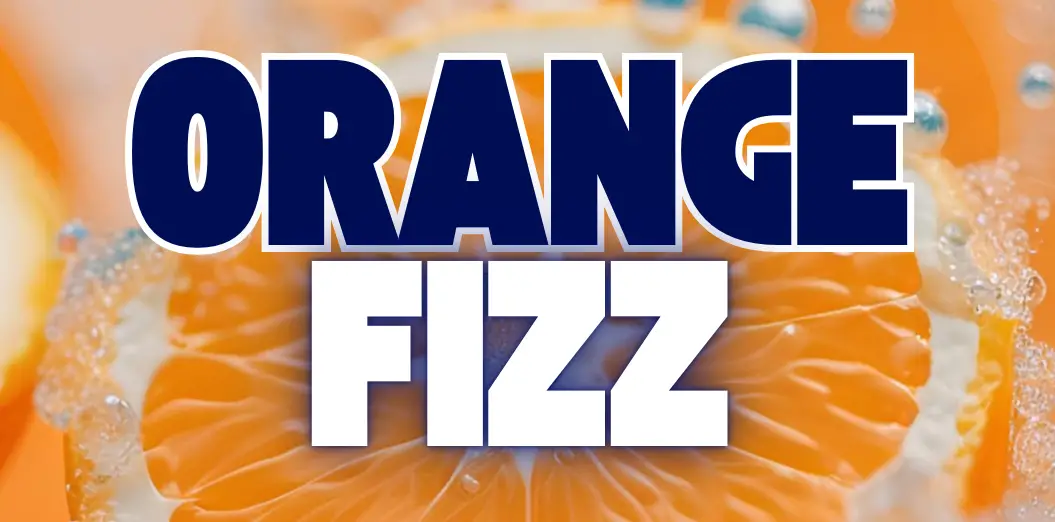
NIL
Big 12 football coaches address continued concerns with player payment, third-party NIL deals
Eight Big 12 head coaches during yesterday’s football media days said that the “Wild West” of player payment in college sports “remains wild,” according to Ross Dellenger of YAHOO SPORTS. Some coaches believe that schools are “making big enough contract offers to recruits that they cannot possibly remain under college football’s new compensation cap.” Others […]
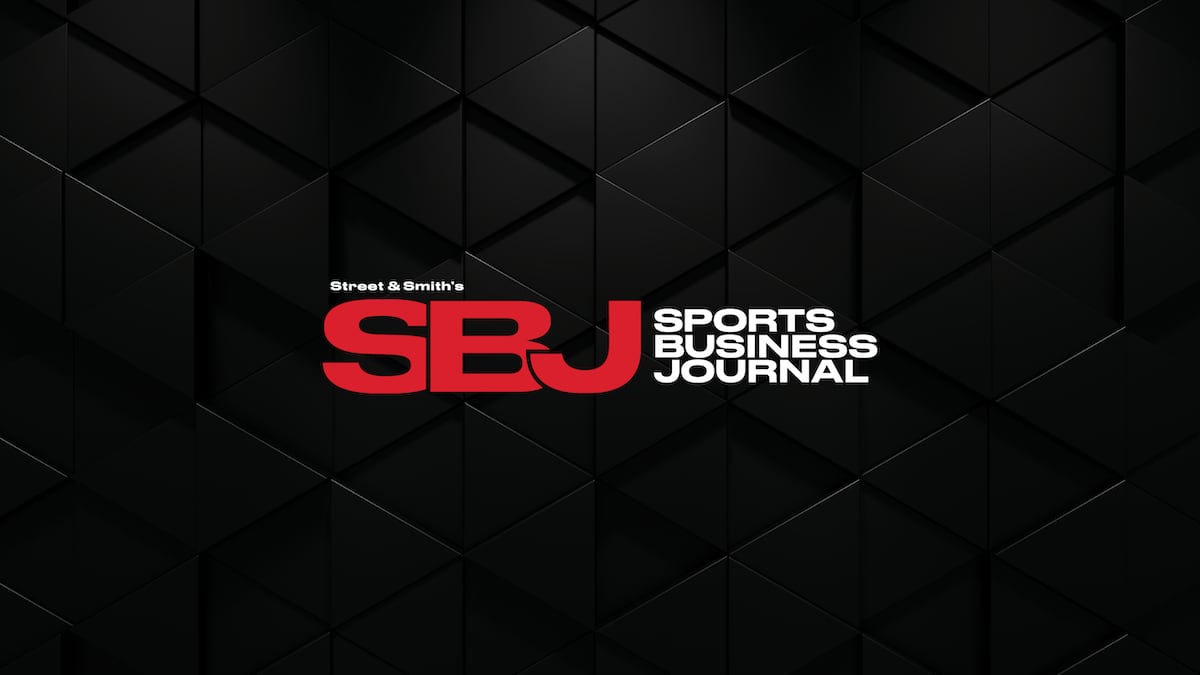
Eight Big 12 head coaches during yesterday’s football media days said that the “Wild West” of player payment in college sports “remains wild,” according to Ross Dellenger of YAHOO SPORTS. Some coaches believe that schools are “making big enough contract offers to recruits that they cannot possibly remain under college football’s new compensation cap.” Others are “guaranteeing third-party NIL deals as part of the total compensation package to athletes — something against new revenue-share rules.” Cincinnati head coach Scott Satterfield said, “I don’t understand what rules everybody is playing by. The whole point of this was for us all to be playing by the same rules, but we are not.” Sources said that the new entities charged with enforcing these policies, the College Sports Commission and its Deloitte-run NIL clearinghouse, are “bogged down in legalities tethered to the settlement.” Dozens and “potentially hundreds” of submitted third-party NIL deals “remain under review.” Sources said that of the more than 1,200 deals submitted to the clearinghouse, “about one-third have been approved.” About 80 have been denied and “are likely” to be resubmitted, which can happen once. Lawyer Jeffrey Kessler said that “no deals have advanced past the second denial stage and into the appeals phase.” Big 12 coaches said that they are “witnessing schools finding new ways, in the revenue-share era, to circumvent the cap and skirt the rules” (YAHOO SPORTS, 7/8).
NIL
Fanatics announces ‘significant’ NIL deal with BYU freshman AJ Dybantsa
BY ALEJANDRO LOPEZ & ADAM ZAGORIA Fanatics and Fanatics collectibles are set to partner with incoming BYU freshman AJ Dybantsa in one of Fanatics “most significant NIL deals ever,” the company announced on Wednesday. The deal is set to be in effect immediately and will follow Dybantsa after his college career is over. It includes […]

BY ALEJANDRO LOPEZ & ADAM ZAGORIA
Fanatics and Fanatics collectibles are set to partner with incoming BYU freshman AJ Dybantsa in one of Fanatics “most significant NIL deals ever,” the company announced on Wednesday.
The deal is set to be in effect immediately and will follow Dybantsa after his college career is over. It includes autographed trading cards, game-used jerseys, inscriptions and will also see the star freshmen be included in Fanatic marketing campaigns.
Dybantsa, who signed with BYU on an NIL deal worth close to $7 million, will also be featured in upcoming new product lines, including “Bowman U NOW,” which will celebrate special moments in college sports.
Dybantsa is set to be one of the biggest names and brands in all of college basketball next season as he prepares for the 2026 NBA Draft.
He was just named MVP of the U19 FIBA World Cup in Switzerland, where he helped the USA win gold.
Follow Adam Zagoria on Twitter
Follow ZAGSBLOGHoops on Instagram
And Like ZAGS on Facebook
Follow Alejandro Lopez on Twitter
NIL
Top NBA prospect AJ Dybantsa signs exclusive deal with Fanatics, explains BYU choice
Fanatics and Fanatics Collectibles announced Wednesday they’ve signed incoming BYU freshman AJ Dybantsa to a multi-year exclusive deal, dubbing the pact one of the company’s “most significant NIL deals ever.” Dybantsa, 18, is a top candidate to become the No. 1 pick in the 2026 NBA Draft. The partnership starts immediately, according to Fanatics, focusing […]
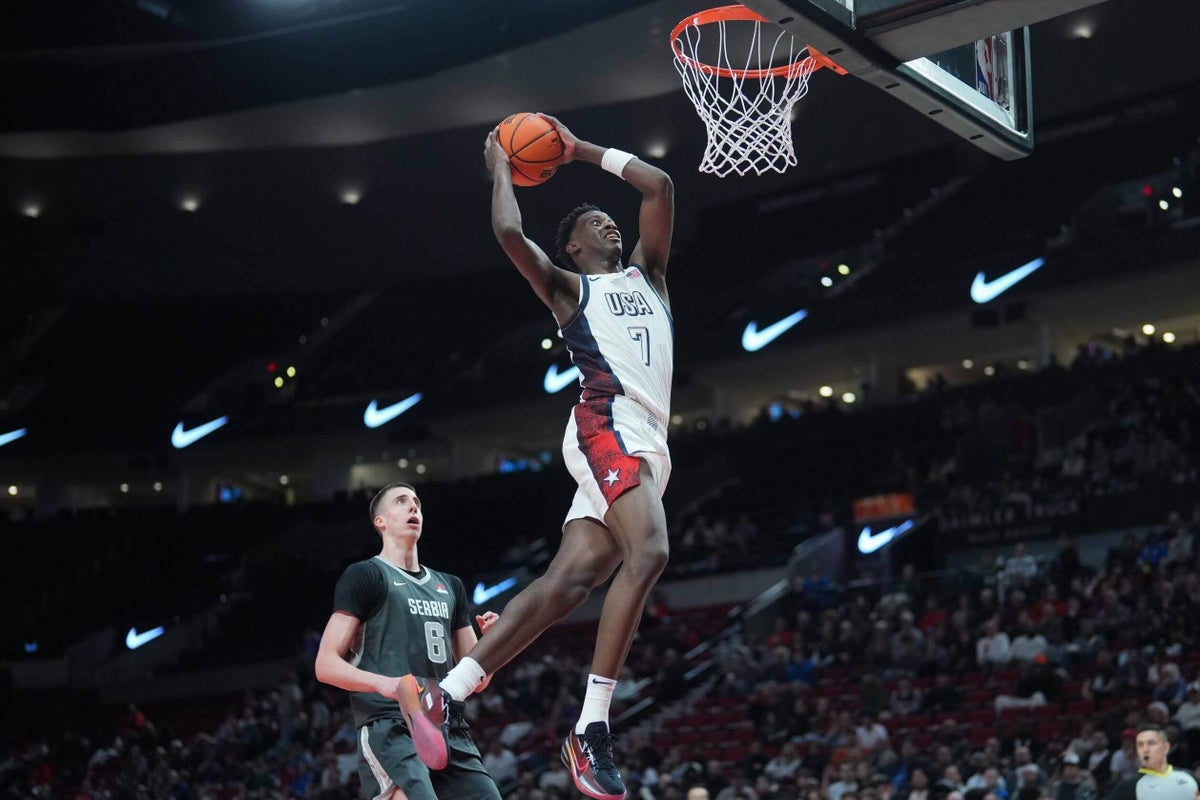
Fanatics and Fanatics Collectibles announced Wednesday they’ve signed incoming BYU freshman AJ Dybantsa to a multi-year exclusive deal, dubbing the pact one of the company’s “most significant NIL deals ever.”
Dybantsa, 18, is a top candidate to become the No. 1 pick in the 2026 NBA Draft. The partnership starts immediately, according to Fanatics, focusing on trading cards and memorabilia and will extend beyond Dybantsa’s collegiate career.
“Me and my family really just take time with these deals we get,” Dybantsa told The Athletic when asked why he signed with Fanatics. “We don’t just go for any brand. It’s kind of more than just the brand itself. It’s kind of who’s running it, who’s behind it. We’re big family people, so how the brand is like a family connection, and we think we met those standards with Omar (Wilkes, head of athlete partnerships for Fanatics Collectibles) and Michael (Rubin, Fanatics CEO).”
Fanatics signing top NBA draft prospects to exclusive deals is a continuing trend for the company, following agreements with Victor Wembanyama and Cooper Flagg. On the women’s side, Fanatics also signed USC’s JuJu Watkins to an exclusive deal earlier this year. Dybantsa is fresh off an MVP performance in helping Team USA win the FIBA U19 World Cup in Switzerland on Sunday by beating Germany in the finals.
For trading cards, the deal will include autographs, game-used jerseys, inscriptions and being involved in brand marketing campaigns. According to Fanatics Collectibles, Dybantsa will be in a number of upcoming products, among them Bowman U Now and other Bowman offerings.
Topps, owned by Fanatics, is set to take over the NBA licensing for trading cards in October, taking it away from Panini. This means collectors can acquire NBA autographed cards with team logos and names attached for Flagg and eventually Dybantsa. That wasn’t the case for Wembanyama, whose autographed rookie cards appeared on unlicensed Topps products.
Below is a selection of questions and answers from the 6-foot-9 forward’s interview with The Athletic about collecting, NIL, BYU, and potentially being the No. 1 pick in next year’s NBA Draft:
How big are you into card collecting at all?
I was when I was younger. I used to collect cards, but ever since then I haven’t really haven’t done too much. I liked NBA, NFL, MLB (cards), but I haven’t been doing too much about that. … I probably had a crazy Charizard or something like that.
Do you see yourself maybe collecting yourself or do you think, nah, maybe not?
Yeah. I might collect myself. I can pull for myself. It might be cool.
Would you go chasing after cards? Maybe go try to buy it yourself?
I don’t know if I’ll buy my own card, but if he was willing to give it to me for free, I’ll take it.
Who are some of the players that you’ve modeled your game after that you admire and inspire?
My favorite player since growing up has been Kevin Durant. I tried to model my game after various guys, though, like Kawhi Leonard, Paul George, Tracy McGrady, now Shai (Gilgeous-Alexander). Just those types of big wings, big guards.
In terms of a basketball program and a brand, what drew you to attend BYU?
With the staff they had, (BYU head coach) Kevin Young has coached my favorite player. He’s also coached Chris Paul, Joel Embiid, Devin Booker. Those types of guys. My ultimate goal is to go to the NBA, so why not try to get that knowledge earlier, before I get there and try to be the most prepared for when I get there.
How much have you been in touch with people along the way for guidance?
When I come across them, you know, I ask questions. Our life, we practice a little bit (for the NBA), but nothing has even come close to even starting there so I’m just excited to play college basketball. I’m not too worried about the whole process. But I’ve talked to guys like Jaylen Brown, Jayson Tatum, Paolo (Banchero). They shared their experiences going through the draft process.
How do you juggle being a player and then having NIL commitments?
It’s good that players can make money off of their brand. They should have (before recently). I know a lot of players wish that they were younger so they can have the opportunity. I think it should have been applied a while ago, but I think it’s a great add on for athletes, not just basketball, generating however much money from fans, from games and ticket sales and everything. They should get a piece, so this is exciting that you can make money off of your name.
What are some of the things on the court you could work on? What are some of the things that you really feel like suit you for the college game and for the next level?
I’ve got a lot of stuff to work on. Just improving my shot, making quicker reads. Obviously, these guys are stronger, older and smarter. So just doing everything quicker and more precisely because this is not high school. They’re not going to just let me do whatever I want. …
I’m just getting in shape. Obviously we’re above sea level by 5,000-plus feet. So it’s getting in shape being able to withstand playing a full 40-minute college game. Getting used to the 3-point line being farther. Doing everything at a faster pace on a college level.
The Athletic maintains full editorial independence in all our coverage. When you click or make purchases through our links, we may earn a commission.
(Top photo: Soobum Im/Getty Images)
NIL
House Rules: What the NCAA Settlement Means for Lacrosse as We Know It
WHAT IT MEANS The House settlement was approved by U.S. Judge Claudia Wilken on June 6, and it brings significant changes to college athletics by addressing three antitrust lawsuits brought against the NCAA. Under House, the NCAA and major conferences will send $2.78 billion in backpay over the next 10 years to former college athletes […]

WHAT IT MEANS
The House settlement was approved by U.S. Judge Claudia Wilken on June 6, and it brings significant changes to college athletics by addressing three antitrust lawsuits brought against the NCAA.
Under House, the NCAA and major conferences will send $2.78 billion in backpay over the next 10 years to former college athletes who competed between June 2016 and September 2024, but were denied NIL earnings. Think players like Sam Apuzzo, Matt Rambo, Izzy Scane and Pat Spencer.
Schools now can begin directly compensating their student-athletes through revenue sharing, with that compensation pool capped at around $20.5 million in 2025-2026. The pool is set to increase 4 percent annually for the next 10 years. It’s designed to help schools pay student-athletes for revenue they help generate and dissuade the pay-for-play NIL deals through collectives that had become commonplace since 2021.
NIL deals aren’t going away, but there’s a new process designed to legitimize them. Student-athletes must create an account and report every deal valued at more than $600 to the new online platform, NIL Go, set up by accounting firm Deloitte.
Each deal’s “fair market value” will be vetted and any deal not cleared can be modified or canceled, or a student-athlete can request neutral arbitration. Keeping an uncleared deal could affect eligibility.
A new entity, the College Sports Commission, is charged with monitoring and enforcing compliance in revenue sharing, NIL deals and roster limits.
LIMITED ROSTERS, UNLIMITED SCHOLARSHIPS
Roster limits are a key piece of the settlement. Previously, sports had unlimited rosters but limited scholarships. The settlement sets roster limits for each sport with the ability to offer a scholarship to every student-athlete on a team. Women’s lacrosse will be 38; men’s lacrosse 48.
One of the final provisions that held up the settlement gives schools the ability to retain rostered players or incoming 2025-2026 freshmen that would put them over the roster limit over the next four years. Players who would have been cut under the new roster limits had to be identified “in good faith” as Designated Student-Athletes (DSA) by July 6.
The DSA distinction is a one-time opportunity for each school but remains with student-athletes throughout their career, whether they remain at the school or transfer. Transfer DSAs do not count against their new school’s roster limit.
WHO’S IN AND WHO’S OUT
Schools must decide annually to opt in or out of the settlement to trigger the options.
“There’s just so much concern financially with making sure that the athletic departments are healthy and can compete,” Northwestern women’s lacrosse coach Kelly Amonte Hiller said.
Part of the backdrop behind that decision is that all Division I member schools are already losing funds as part of the $2.78 billion backpay to former student-athletes. The NCAA will bear some of the financial burden, but schools will also see a reduction from payouts like March Madness and conference deals.
“As an athletic department, you’ve got your portion of the backpay settlement for 10 years, so you’re losing money that you would normally bring in from the conference,” Saint Joseph’s men’s lacrosse coach Taylor Wray said.
The Ivy League and Patriot League have opted out as conferences. They’ve never had scholarships but do offer generous financial aid packages.
“From an Ivy League standpoint, we feel very comfortable because we haven’t changed and we’ve continued to operate in the same landscape that we always have,” said Dartmouth men’s lacrosse coach Sean Kirwan, adding, “With everything changing, it’s kind of nice to be a group that doesn’t have to change.”
By not opting in, their teams won’t have roster limits and their schools won’t be paying student-athletes. Army and Navy (Patriot League) have always been tuition-free because of their military commitments.
“The Patriot League has had discrepancies. Fully funded, not fully funded and the military academies — we’ve always had that,” Holy Cross women’s lacrosse coach Amanda Belichick said. “That’s one of the things that’s unique about our conference. Maybe what you start to see in other conferences is a little bit more of that.”
We know Clemson is all in. Boston College, Denver, Florida, North Carolina, Penn State and South Florida were schools mentioned by multiple coaches as aggressively increasing their support for women’s lacrosse in the wake of the new rules.
“Carolina is going to be very, very competitive in this new market,” Levy said. “I’m not worried about us, but I worry about the sport. It doesn’t help us if 50 percent of the ACC schools don’t match that commitment.”
“One of the reasons I am at Penn State is that they’re all in and they’re going to fully support the women’s lacrosse program,” said Kayla Treanor, who recently left Syracuse to become the head coach in Happy Valley.
Schools that opt into the settlement can pay their student-athletes out of the $20.5 million pool cap, but they don’t have to. It’s up to them how they share the revenue between their sports.
“It’s great that we can pay the players and that they can make an income on top of their scholarship,” Treanor said. “When NIL first came out for women’s lacrosse, it was really to help them pay for their scholarship because we only had 12. Now that number is increasing for a lot of schools. Now this money can go into the players’ pockets.”
-

 Technology2 weeks ago
Technology2 weeks agoPet fitness and wellness trends for a healthier and happier dog
-

 College Sports2 weeks ago
College Sports2 weeks agoWAC to Rebrand to UAC, Add Five New Members in 2026
-

 Motorsports1 week ago
Motorsports1 week agoWhy Cosmetics are Making Up for Lost Time in Women’s Sports
-
College Sports3 weeks ago
Women's Basketball Thanks Shannon LeBeauf for 14 Seasons
-

 Professional Sports3 weeks ago
Professional Sports3 weeks agoAlex Pereira responds to rumors of UFC heavyweight title fight with threatening message
-

 College Sports3 weeks ago
College Sports3 weeks agoAlabama Basketball
-

 Professional Sports2 weeks ago
Professional Sports2 weeks agoFrancis Ngannou sends Dana White a message following Jon Jones' shock UFC retirement
-

 Motorsports2 weeks ago
Motorsports2 weeks agoNASCAR This Week – Patriot Publishing LLC
-

 College Sports2 weeks ago
College Sports2 weeks agoA new era of Dickinson hockey begins behind the bench – The Dickinson Press
-

 Sports2 weeks ago
Sports2 weeks agoSEC Conference imposing a fine will create the opposite effect.
































